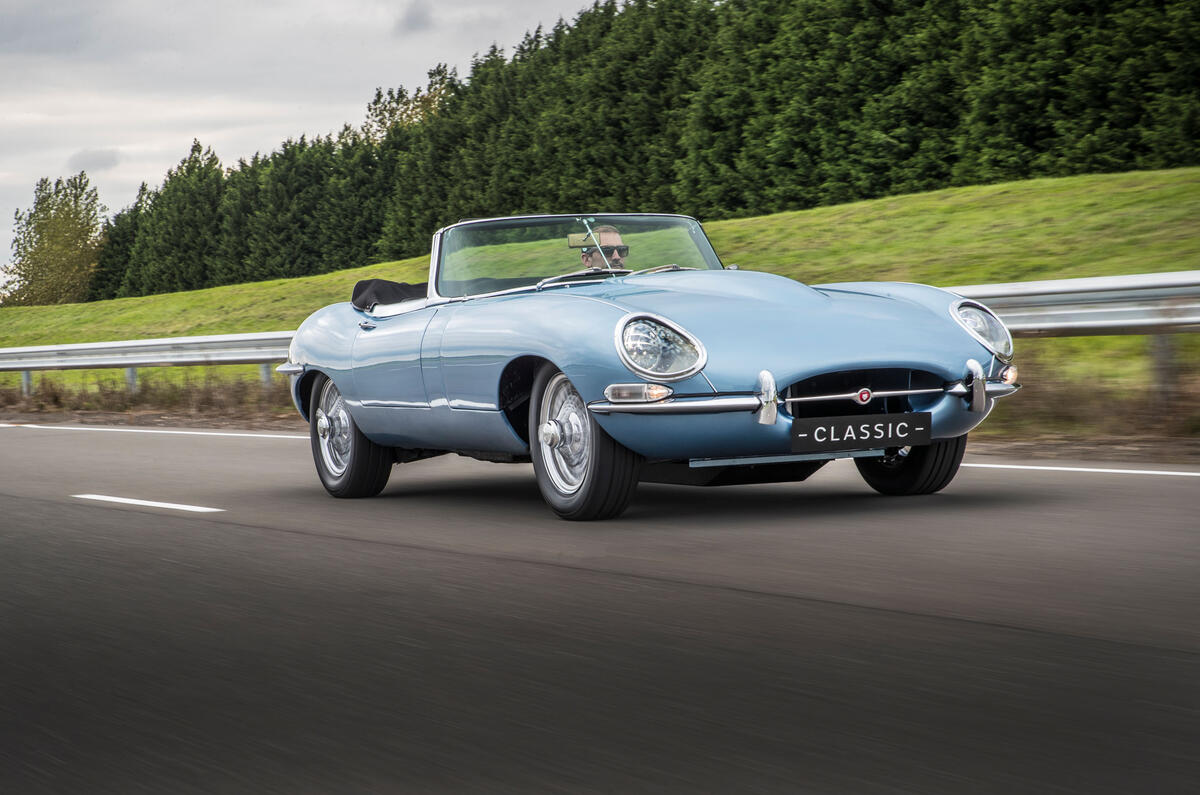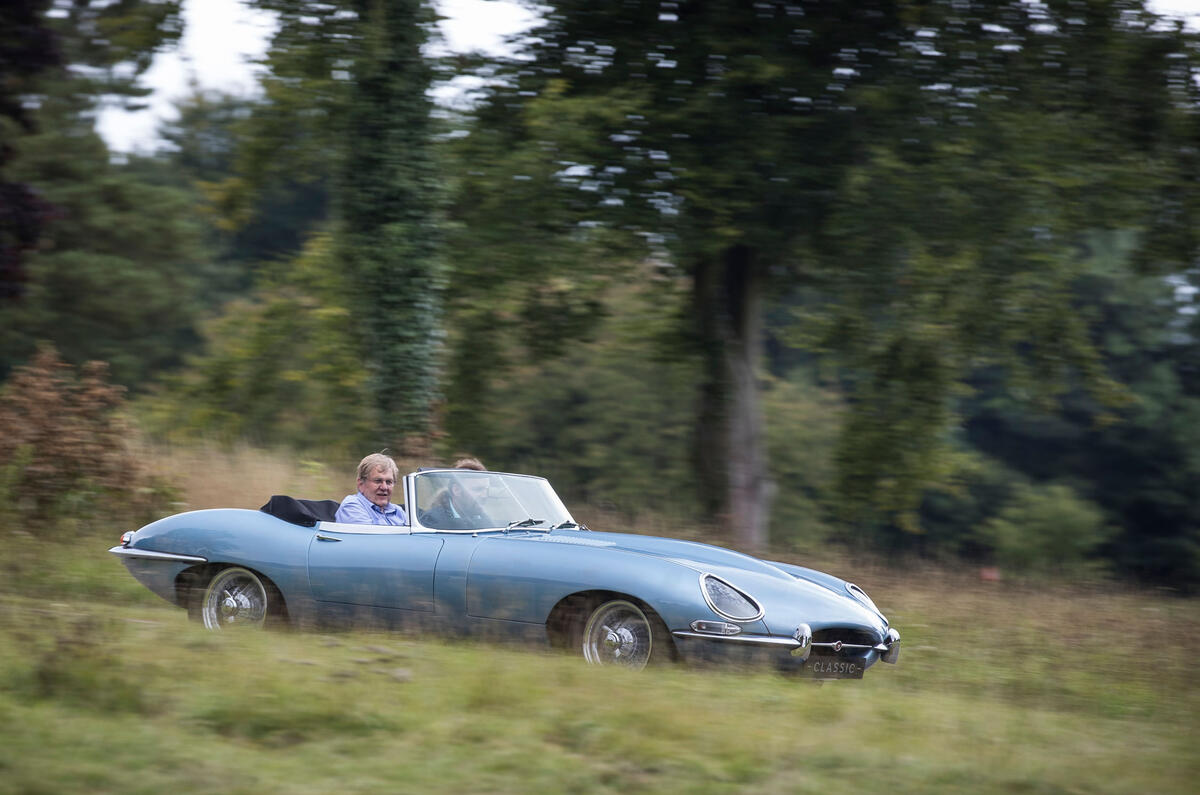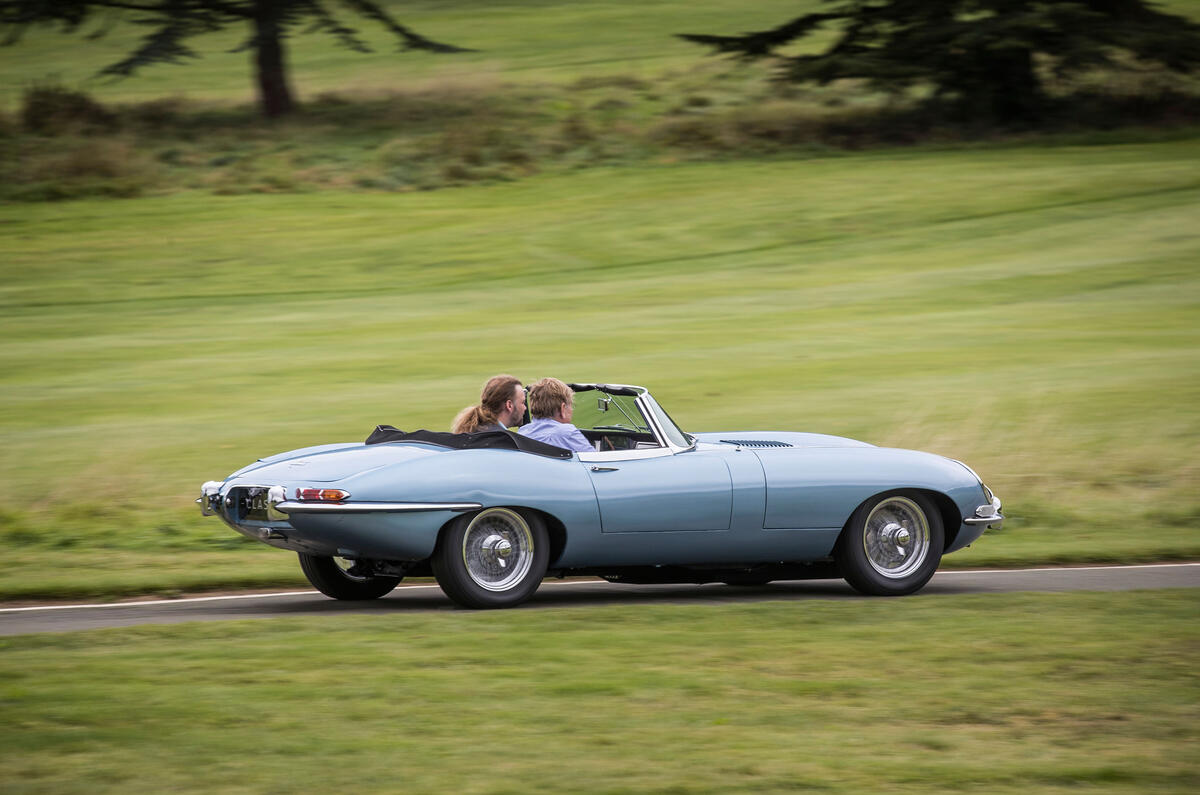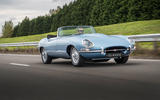Jaguar will put the all-electric E-Type Zero into production, following the enthusiastic reception received by a one-off concept version unveiled last year.
Jaguar Land Rover Classic, the company’s fast-growing heritage division, will sell original E-Types that have been restored and converted to run on battery power. It will also offer a conversion service for existing E-Type owners, alongside its current E-Type Reborn programme. First deliveries are expected in summer 2020.
The firm hasn't released full technical specs but says it is aiming for a range of more than 170 miles, using a 40kWh battery. The E-Type Zero Concept shown last year featured a 295bhp electric motor and had a claimed 150mph top speed - matching the original 1961 car - and a 0-60mph time of 5.5sec. The powertrain takes many of its components from the Jaguar I-Pace EV.
The battery of the E-Type Zero takes the place of the original's 3.8-litre six-cylinder iron-block engine under the bonnet, with the electric motor fitting in the space of the newly absent gearbox. The E-Type Zero weighs 46kg less than the original.
It also receives modified instrumentation, with a touchscreen available as an option. LED headlights are added, but otherwise the concept is described by Jaguar as "largely original".
Jaguar Land Rover Classic boss Tim Hannig said that "future-proofing the enjoyment of classic car ownership is a major stepping stone for Jaguar Classic".
The EV conversion will be fully reversible, allowing owners to refit the straight six if required. Jaguar is yet to release pricing information, but an estimate "north of £300,000" was given. The Concept Zero's most notable appearance to date was during the royal wedding earlier this year.
The birth of the E-Type Concept Zero
The Concept Zero, aptly dubbed Project Marmite in the early months of its 18-month gestation, is Hannig's brainchild.
An avowed old-car lover with his own classic collection, Hannig is quick to acknowledge that an electric E-Type won’t suit everyone and may outrage a few. But he has nevertheless coined the motto ‘We future history’ for JLR’s newest division, believing it must look to a time when big cities have zero-emissions zones, and to a new breed of buyers who desire classic motoring “without the oil leaks”.










































Join the debate
Add your comment
Options
I would have thought it would be cheaper to start from scratch, afterall they're capable of making every part of this 'simple' car.
I don't think this conversion will prove popular IMHO, certainly not as popular as building from scratch.
Wow, what an encouraging response
Five years ago this story would have caused the Autocar comments section to explode with rage.
Clearly this isn’t for everyone, and the cost is something only JLR could get away with, but it’s the shape of things to come for people who want to use a classic as a daily driver. Yes, we’ll be able to drive old cars in the future, but mileage is likely to be very limited.
I can’t wait for the inevitable self-contained electrification in a crate option to become available. My ancient MX5 would be an ideal recipient when I finally blow the engine.
Maybe VW will relauch an A2
Maybe VW will relauch an A2 electric a motor and spare wheel in the front (it could slide out from behind the front flap) and batteries under the back seat.